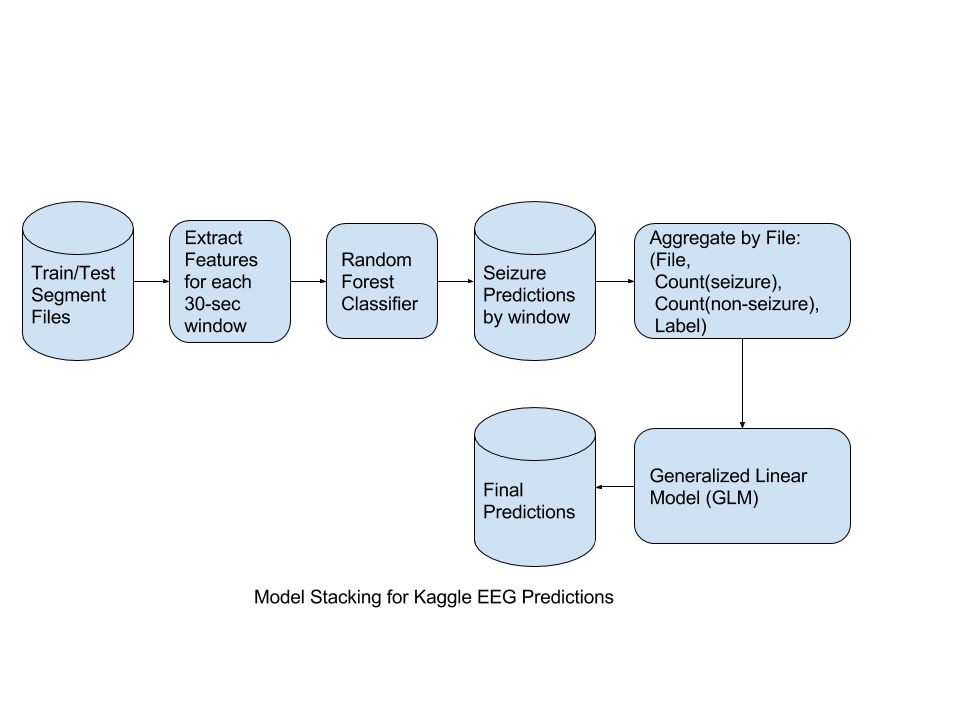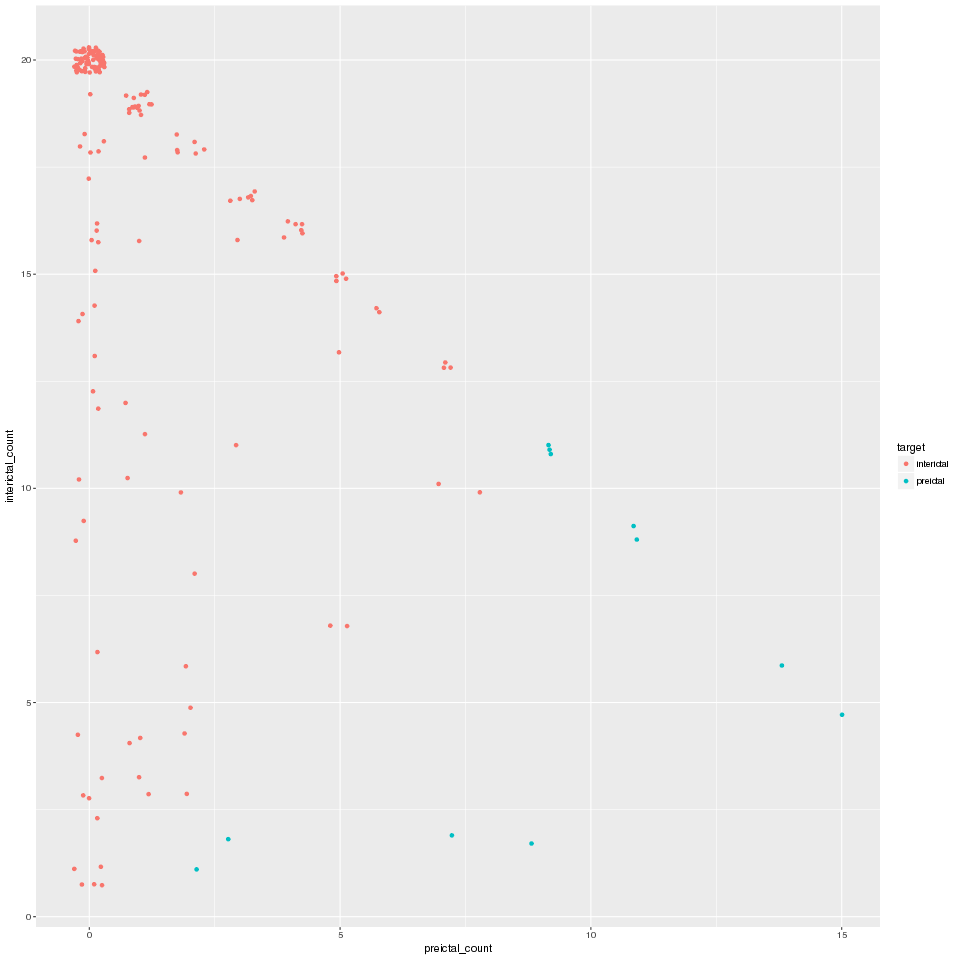Kaggle Seizure Prediction Competition
author: Telvis Calhoun date: February 3, 2017 autosize: true
Kaggle Competition Goal
Detect seizure (preictal) or non-seizure (interical) segments of intracranial electroencephalography (iEEG) data. See Kaggle EEG Competition page for more details.
My Approach:
- Extract basic stats and FFT features for non-overlapping 30-second iEEG windows
- Detect signal drop out and impute missing data with mean for each feature per window
- Predict seizure and non-seizure segments using a stacked model.
Overview of Stacked Model
Model Features
Random Forest
- Min, Max, Mean, Median, Std Err, Absolute Sum per EEG channel per window
- Kurtosis, Skewness per EEG channel per EEG Channel per window
- Entropy of FFT magnitude and phases
- Entropy, Eignenvalues of EEG channels
GLM
- Number of windows per file predicted
preictalby RF - Number of windows per file predicted
interictalby RF
Model Parameters
- Number of Trees (ntree) -
50 - Number of variables randomly sampled as candidates at each split (mtry) -
74 - Metric -
Accuracy - Number training folds -
5 - Use SMOTE due to
preictal/interictalclass imbalance
- Weight for
Preictalsamples:1.0 - Weight for
Interictalsamples :0.25 - Number training folds -
5
GLM Predictions
- Each point represents a 10-minute EEG segment file
- X-axis is the number of 30-second windows predicted as
preictalby the RF - Y-axis is the number of 30-second windows predicted as
interictalby the RF - The closer to an axis, the more certain the predicion
Final Thoughts
- This is my first Kaggle competition. I acheived my goal of making a competition submission. See my profile.
- I submitted after the deadline but my submission would have ranked 391 of 2440 submissions. Screenshot
- The Kaggle model stacking tutorial helped me understand cross-fold validation with stacked models.
- Deep's Kernel and Tony Reina's Kernel helped me understand EEG features.
- Special thanks to Hassan Kingravi for suggesting the stacked model.

